What are the best Mexican gins? You’ll have some tasting to do in order to decide. Contributor Leigh Thelmadatter walks us through the emerging gin landscape.
OK, I’ll admit my first experience with gin in Mexico was a little gringo–sitting on a beach drinking it out of a coconut. But it was delicious.
That was 20 years ago, when gin was scarce in Mexico–nevermind the idea that Mexico is capable of making gins that can compete worldwide. Perhaps our obsession with agave-based spirits blinds us to how Mexico’s rich biodiversity (second in the world) and extremely varied agricultural heritage might contribute to other spirits.
Gin offers Mexico a showcase much more than any other spirit. After all, aside from the use of juniper, there are no rules, essentially giving distillers here a blank slate. As Andrés Rubio of Granicera (formerly Brujo de Agua) stated, “Gin is the possibility to experiment with the magic of plants but even more so, the magic of places from which these plants originate.”
What is gin and what would make it “Mexican”?
Unlike other distillates, gin is not defined by what plant(s) are used to make the alcohol but rather flavoring, in particular juniper.
Gin was first concocted in Europe in the 17th century as a medicinal product; the healing properties of juniper were extracted in alcohol distilled from sources as varied as grapes and grains. The product was eventually converted from medical to recreational–with regional and historical variations. Gin’s association with England comes from its extreme popularity there, with the London Dry variety still considered a gold standard by gin makers.
Mexico is no stranger to macerated alcohols (see our article on caña here), but most of these are very sweet and do not (yet?) attract the attention of either Mexican or foreign cocktail drinkers. Gin was unknown in Mexico before the 20th century; until recently the only available gins were imported brands. This gives gin an air of exclusivity and sophistication in Mexico that other flavored spirits do not have.
Is agave gin a thing?
In the past decade or so, Mexico’s continued rising reputation for fine alcohols, from the traditional agave distillates to wine and craft beer, has brought some craft producers and sophisticated drinkers to the idea of a Mexican version of gin. Today, there are a number of gin producers experimenting with a wide range of alcohol bases. Corn is the most common, but Solferino in the Yucatan uses sugar cane, and Excéntrico in Coahuila is experimenting with a sotol base. Gracias a Dios (GAD) prominently calls its spirit an “agave gin.”
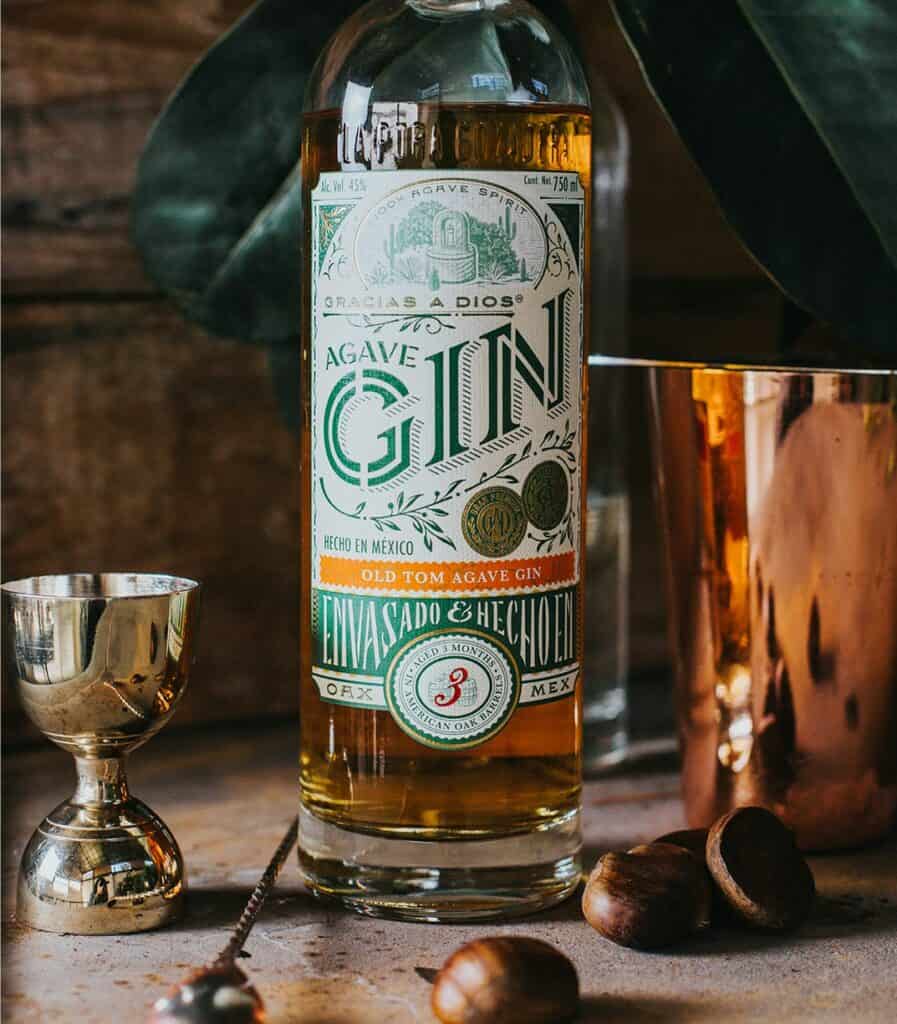
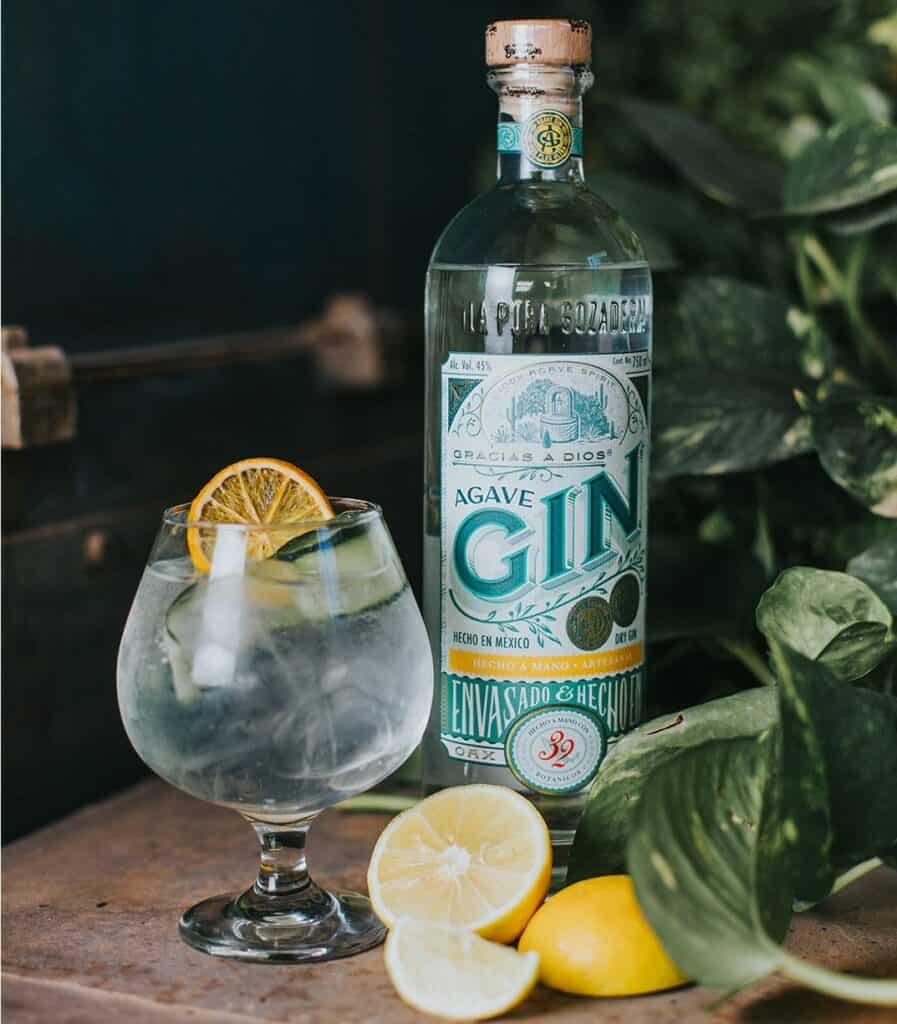
All Mexican gins contain juniper. Although there are native juniper varieties, all the current producers work with European juniper for both flavor and marketing. The niche market for gin in Mexico is upscale, so maintaining that connection is important. The “Mexicanization” comes from the addition of other flavorings. Some Mexican gins have as few as three additional infusions, and at least one has over 50. Yes, chili peppers play a role in the industry, but they do not dominate; you can find herbs like damiana, cilantro seeds, vanilla, hoja santa, and much much more.
Some Mexican gin brands to start your adventure
To get a better sense of all of this swirling innovation, let us take a look at innovators who have focused primarily or exclusively on developing their ideas to make Mexican gin.
Taller Astrafilia was founded by Andrés Rubio and Heráclito López in 2015. The company is responsible for one of Mexico’s most respected gin brands – Granicera (formerly known as Brujo de Agua). It focuses on using native endemic corn and flavorings from southeastern Mexico, Chiapas in particular. The company name and products reflect a strong interest in the celestial and magical, as a granicera (or grain woman) was also a term for a natural healer or witch. In addition to gin, Taller Astrafilia offers a line of gin liqueurs and bitters called Maleza. All their ingredients are sourced from small farmers, and they focus on what is seasonally available.
Fresco 77 is the result of Oaxacan and Austrian sensibilities that came together in Mexico City. José (Pepe) Arango and Alexander Cziharz met in 2009 and found they had many interests in common. In 2017, they bought their first still to experiment with various types of spirits, but would settle on gin for its flexibility.
They experimented with a wide range of botanicals, but the basis of Fresco 77 was formed by Arango’s love of Oaxaca’s cuisine and Cziharz’s family experience with schnapps and other Austrian distillates.
The name is reflective of both the aim and the process. The goal was to produce a gin with a refreshing taste similar to that of aguas frescas (natural fruit drinks) on a very hot day. 77 refers to recipe 77 of 119, the one they went with.
But developing has been the easy part; much harder has been managing the company, meeting market-legal requirements, and promotion. It didn’t help that Fresco 77 launched in 2020 during the pandemic, but the real challenge has been to keep the small company vibe while not getting crowded out. Their location in Mexico City’s popular Roma/Condesa area has been a double-edge sword: demand for quality gin is higher, but so is competition–and legal scrutiny.
Like other Mexican gins, they look for a Mexican profile, but there are two important distinctions. One is the use of two varieties of cactus fruit grown just northeast of the city. The other is blending the more piney European juniper with an earthier/drier Mexican variety from Baja California. Their hard work has paid off with silver at the London Spirit Competition and gold at the New York Spirits Competition.
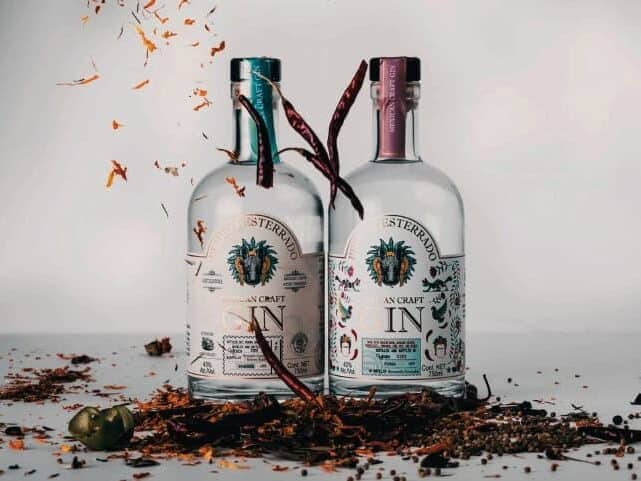
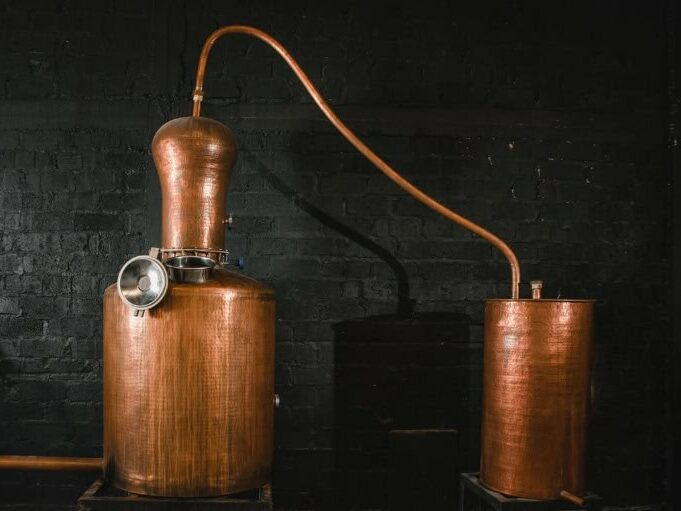
Perro Desterrado is the brainchild of engineer Bernard González and professional chef Andrea Serra. González worked for many years in the tequila industry of his native Jalisco. On a trip to Baja’s wine country, González says “We were impressed by the level of excellence Mexico is capable of producing, in both spirit and food. We have always been lovers of flavors, Mexican ones in particular.” After having success with their first mezcal, Casta Tribal, the couple was attracted to gin, as it allowed them to combine their talents even more effectively. Their gin is based on London Dry and uses European juniper, but includes botanicals from all over Mexico. Perro Desterrado is made in the Guadalajara area.
Armónico is based in Querétaro, a city that’s rapidly growing and has a strong reputation for quality of life, says Juan Carlos, general director. He adds, “The local wine industry is second only to Baja [and catching up], which has been followed by craft beer. Fine distillates are the logical next step.”
Founder Andrés Valverde began with craft beer but found over time that the market was saturated. He switched to distillates and created Armónico in 2017, a London Dry style with citric, floral, and spice notes derived from 32 botanicals sourced from all over Mexico.
Armónico has a significant advantage in that the state includes the brand in its promotional and tourism efforts, alongside wines. The promotion also includes bringing people to their modest warehouse facility in the northwest of the city, which now has a tasting room, a mixology classroom, and a laboratory.


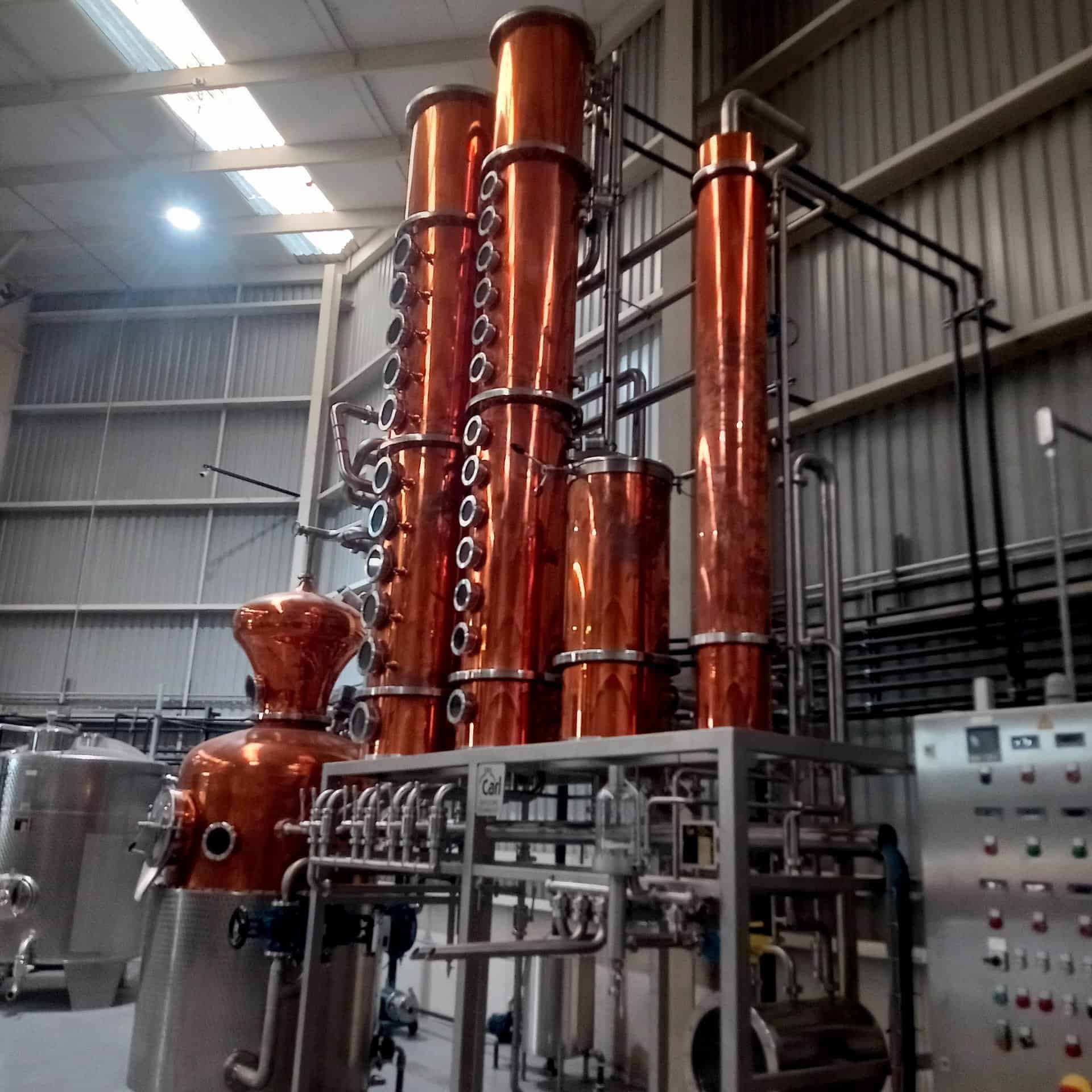
Armónico’s main market has been Mexico City, but the gin can now be found in Europe, the US, and Turkey. Although Armónico is the company’s flagship brand, experimentation never stops at La Insoportable. They make limited editions, such as a gin with a base of distilled local wine. There are dozens of bouquets of botanicals, including a “mixe” I had never seen before, with a berry-like aroma I could enjoy smelling all day. Although they have been using corn alcohol purchased elsewhere in Mexico, they now have new equipment from Europe and are in the process of distilling their own base spirit.
The major cities by far have a lead on gin making, but there is at least one worthy competitor hidden in the rainforest of Yucatán.
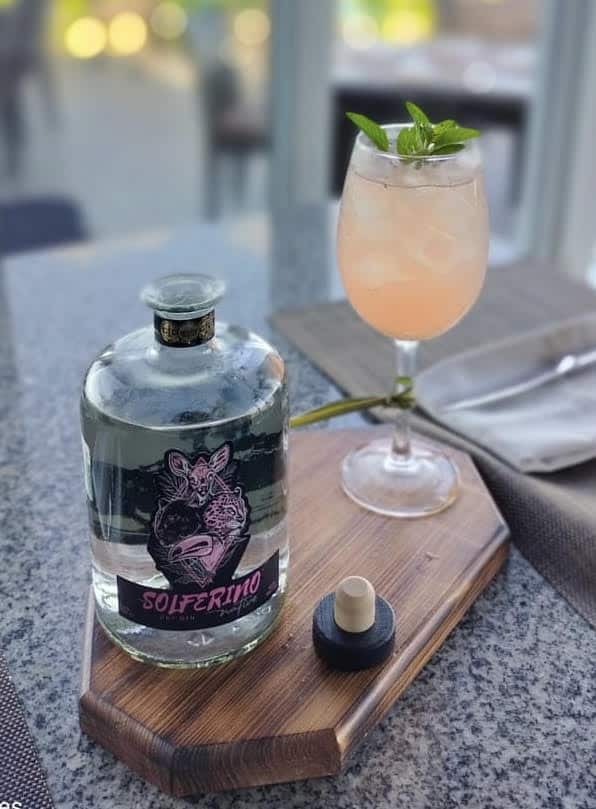

Solferino was founded by Argentinian immigrant Cristian Taraborrelli. He arrived 15 years ago to work temporarily in Holbox, Quintana Roo (and like many of us foreigners just never left Mexico!). He worked his way up from bartending to restaurant ownership until the pandemic not only forced him to close his businesses, but also seek refuge in the small village of Solferino.
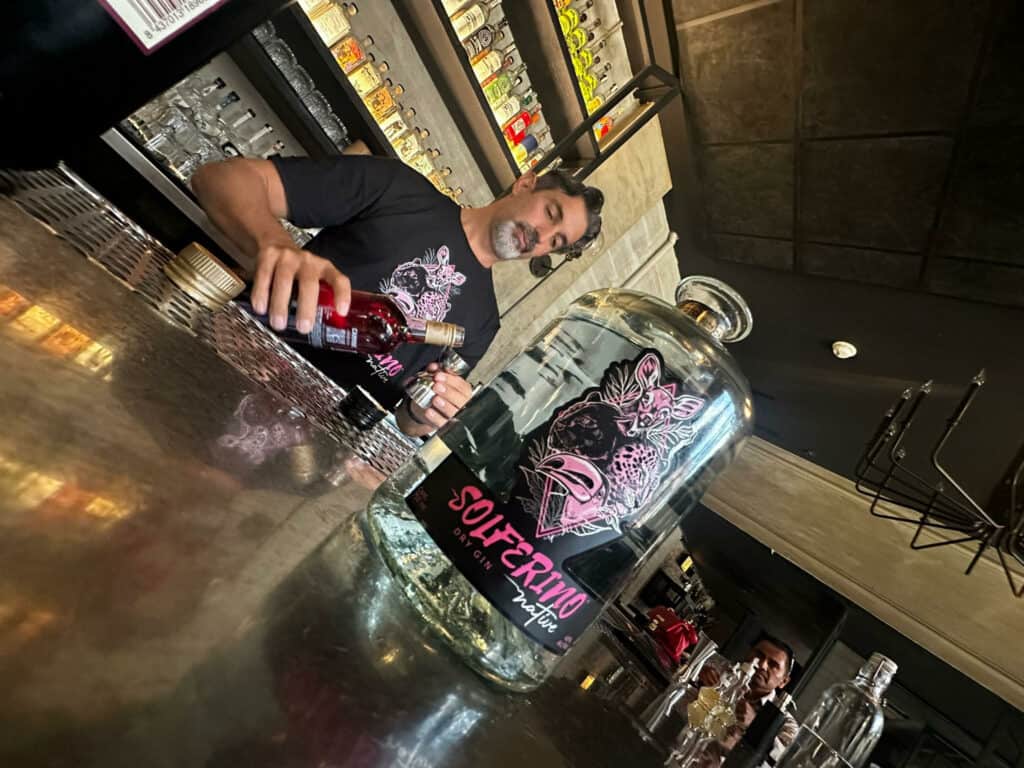
He had started learning distillation and already had a gin recipe that he liked. Being broke, he decided to take his hobby to the next level. In 2021, he began commercial production, but it was not easy. Although Yucatán is a major retailer of alcoholic beverages, it is not a major producer. Getting the necessary permits was difficult because few authorities knew what was involved, nor did they know what gin was.
The enterprise, he found, not only allowed him to make a living, but also to give back to the community which generously took him in during the crisis. His base alcohol is caña (sugarcane alcohol) as Yucatan is a major producer, along with hoja santa (which is very popular in the local cuisine) as well as with lemongrass, grapefruit peel, and spearmint. The gin is named after the community which took him in during a difficult time.
He began by selling in Holbox but has since expanded in Mexico and even sells in Chicago.
Need even more suggestions? You can also check out early pioneer Ginebra Mexicana EV, Diega , which as introduced a moderately-priced gin for a younger crowd, Las Californias in Baja, which focuses on the botanicals of that peninsula, and Katún of Yucatán, which focuses on the cuisine of Mexico’s other big peninsula.
What is the future of Mexican gin?
Cristian Taraborrelli credits gins like Las Californias and Armónico Gin for opening markets but still feels that the industry is in its infancy, with much growth potential. Mexican gin is gaining international popularity among bartenders and mixologists outside of Mexico, and exports are rising. Taraborrelli has found there’s great international interest in Mexican gin, even though people are initially taken aback that it is not tequila or mezcal.
San Francisco-based importer Raza Zaidi is also bullish on Mexican gin. He not only imports a number of gins but has developed his own house brand. The market in the US, he says, still needs educating, but he has been pleasantly surprised on how well the brand has been doing in trials.
As the alcohol base needs to be neutral to let the botanicals shine, most gin makers have started out with commercially-produced alcohol. However, there is a shift toward distilling in-house–-especially with domestic sugars.
Although cocktails are still the most popular way to enjoy gin, Mexico’s agave spirits culture has had the effect of getting people to drink gin neat. Zaidi says he “fell in love with Granicera” when he found out it was worthwhile to sip it and enjoy its flavors without additions.
As a business, gin making in Mexico is still an “anything goes” proposition, with new players, new flavors, and a market that’s still growing. Some makers are starting to feel pressure as larger distillers take notice and look to market more commercial products. “I’m concerned that smaller producers will have to sell or shut down even if they have a superior product.” says Czihirz.
Zaidi adds, “There is so much experimentation at this point and something really fantastic can come of it…something very Mexican that no one would ever think of.”
You can read more Mezcalistas Mexican gin coverage here and here.

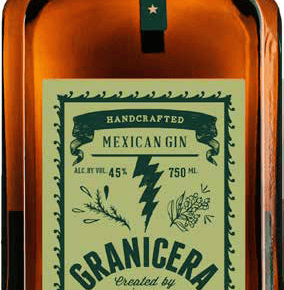
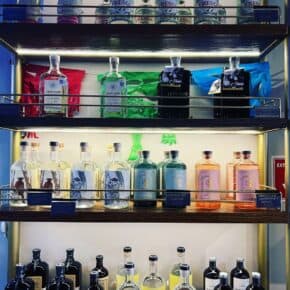
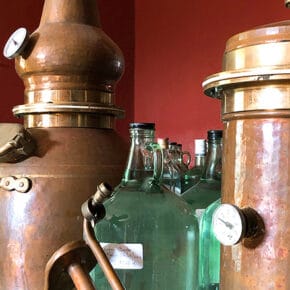
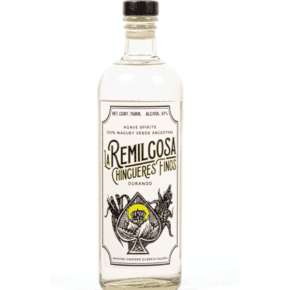
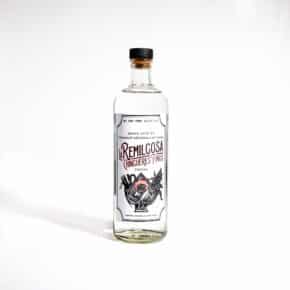
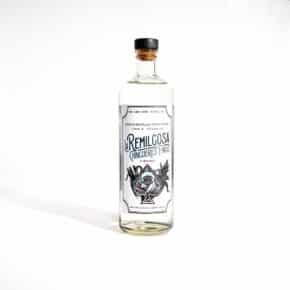






Leave a Comment